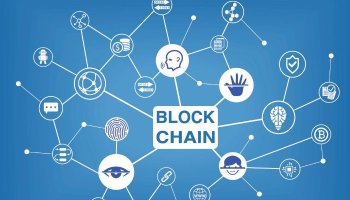https://youtu.be/GMMfxVxdlSM
https://youtu.be/Wkp5a7RZOsQ
MOST people are somewhat aware about the Fourth Industrial Revolution.
The first industrial revolution occurred with the rise of steam power and manufacturing using iron and steel. The second revolution started with the assembly line which allowed specialisation of skills, represented by the Ford motor assembly line at the turn of the 20th century.
The third industrial revolution came with Japanese quality controls and use of telecommunication technology.
The Fourth Industrial Revolution, or first called by the Europeans Industry 4.0, is all about the use of artificial intelligence, robotics, genomics and process, creative design and high speed computing capability to revolutionise production, distribution and consumption. Finance is a derivative of the real economy – its purpose is to serve real production. Early finance was all about the finance of trade and governments to engage in war.
It is no coincidence that the first central banks (Sweden and England) were established in the 17th century at the start of the First Industrial Revolution. Industrialisation became much more sophisticated as Finance 2.0 brought the rise of credit and equity markets in the 18th and 19th centuries. Industrialisation and colonisation came about at the same time as the globalisation of banks, stocks and bond markets.
Again, with the invention of first the fax machine, then Internet that speeded up information storage and transmission in the 1980s, finance and industry took a quantum leap into the age of information technology. Finance 3.0 was the age of financial derivatives, in which very complex (and highly leveraged) derivatives became so opaque that investors and regulators realised they became what Warren Buffett called “weapons of mass destruction”. Finance 3.0 stalled in 2007 with the Global Financial Crisis and was only propped up with massive central bank intervention in terms of unconventional monetary policy with historically unprecedented interest rates.
We are now on the verge of Finance 4.0 and it may be useful to explore what it really means.
The common definition of Industry 4.0 is the rise of the Internet of Things, in which cloud computing, artificial intelligence and global connectivity means that cyber-physical systems can interact with each other to produce, distribute and trade across the world in a massively distributed system of production.
But what does Finance 4.0 really mean?
What truly differentiates Finance 4.0 from the earlier version is the arrival of Blockchain or distributed ledger technology. The best way to think about the difference is the architecture of the two different systems.
Finance 3.0 and earlier versions were all about a top-down or hierarchical ledger system, like a pyramid, in which trade and settlements between two parties are settled across a higher ledger.
A simple example is payment from Joe in bank A to Jim in bank B is finally settled across the books of the central bank in local currency. But in international trade and payments, the final settlements (at least more than 60%) are settled in US dollar finally across the ledgers of the Federal Reserve bank system.
Finance 3.0 was not perfect and those who wanted to avoid regulation, taxation or any official oversight basically moved trading and transactions off-balance sheet and also off-shore. This was the “shadow banking” system that financial regulators and central banks conveniently blamed on their failure to see or stop the last global financial crisis.
Although technically the shadow banking system is the non-bank financial system, which would include bond, stock and commodity markets, the bulk of illegal, illicit transactions traditionally was done in cash.
Welcome to the technical innovation called cyber-currencies, which was made possible for peer-to-peer (P2P) transactions across a distributed ledger system (commonly known as blockchain). In architectural terms, this is a bottom-up system which technically can avoid any official oversight. Indeed, cyber-currencies or tokens were invented precisely because the users do not trust the official system.
As the populist philosopher Stephen Bannon said, “central banks are in the business of debasing the currency”. Hence, those who want to avoid the debasement of their savings prefer to deal with either cash or cyber-tokens like bitcoin (pic).
What is happening in the rapidly evolving Finance 4.0 is that as the world moves from a unipolar order to a multi-polar world in which other reserve currencies also contend for trade and store of value, the top-down architecture is fusing (or merging) with a bottom-up architecture in which trade, transactions and stores of value are shifting towards the P2P shadow system.
Why this is taking place is not hard to understand. Post-global financial crisis, the amount of financial regulations have tripled in terms of number of rules and complexity on what the official sector can regulate, which is mostly the banking system. It is therefore not surprising that all the innovation, talent and money are moving to outside the banking system into the asset management industry, which is much more lightly regulated.
No talented banker, however dedicated to the values of banking probity, can resist the temptations of working in asset management, away from the heavily regulated environment where he or she is 24x7 under regulatory internal and external oversight.
Another reason why the cyber-P2P business is flourishing is because the official sector is worried that further regulation would hinder innovation. But those who want to increase the complexity of regulation must remember that for every 50 foot wall, someone will invent a 51 foot ladder.
So competition in the 21st century has already moved from the physical and financial space into cyber-space.
If there is one thing I learnt as a former regulator, it is that if the banks are behind the curve in terms of technology, the regulators are even further behind, since they learn mostly from those whom they regulate. But if financial regulators deal with financial innovation through “regulatory sandboxes” where they allow their regulated banks to experiment in sandboxes, they are treating their regulated institutions as kids in an adult game of ruthless technology.
Time for the official sector to make their stand clear or else Finance 4.0 promises to be very different from the orderly world that they are used to imaging. Nothing says this clearer than a recent survey by the Chartered Financial Analyst Institute, which showed that 54% of institutional investors surveyed and 38% of retail believe that a financial crisis in the next one-three years is likely or very likely.
You have been warned.
- Tan Sri Andrew Sheng writes on global issues from an Asian perspective.
Related



































